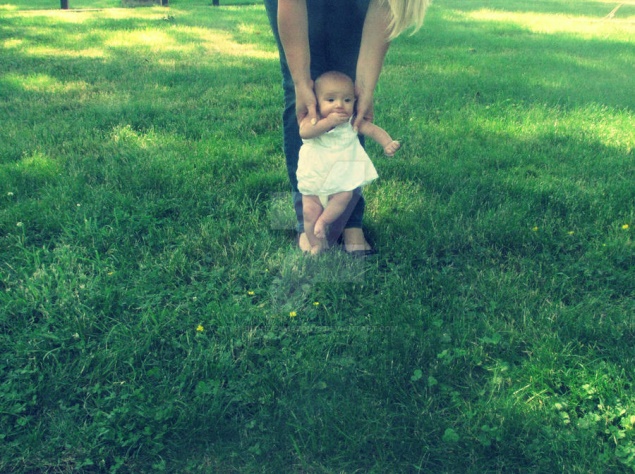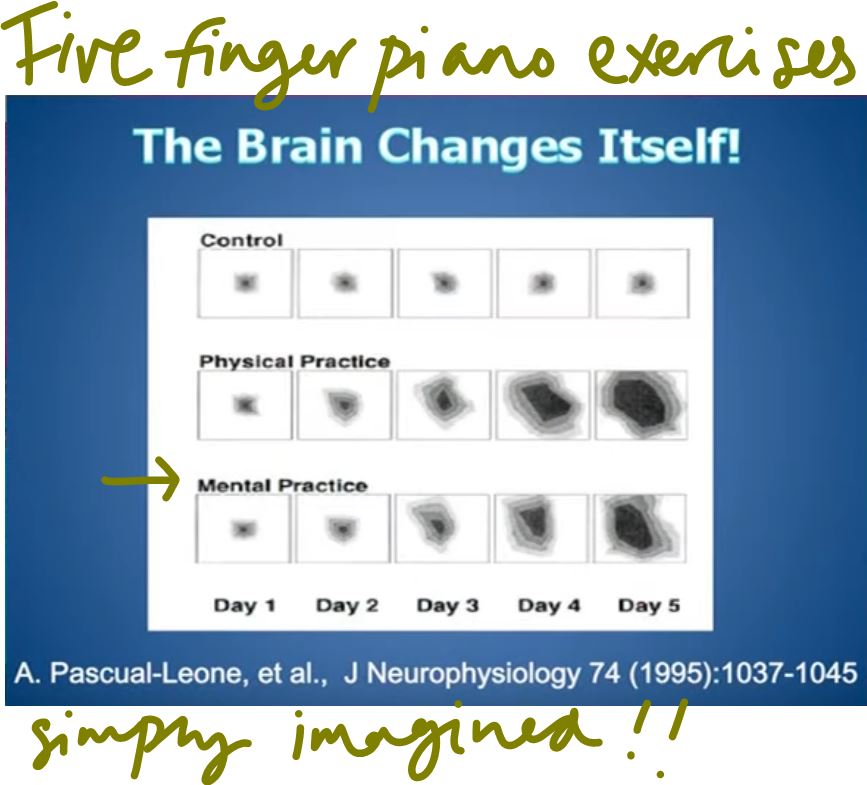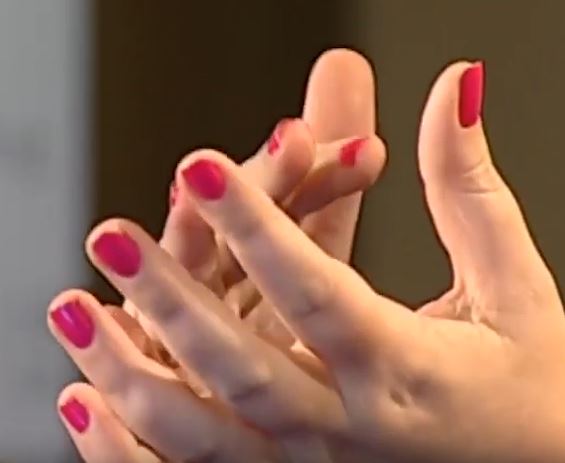Changing our behaviours always do feel like mountainous tasks. We set big goals – my son’s middle school tee-shirt said ‘run fast or be last’. The non sporting version is ‘go big or go home’.
These turn out to be recipes for disappointment.
What typically happens after that is the voice inside the head takes over – you know, that self-critical voice which says ‘see, you couldn’t do it’ or ‘you never did have the will-power’.
What people don’t tell us is that we should think small — as in baby steps – we do something which is in the direction of what we want to achieve. These baby steps will become a new habit.
BJ Fogg, a behavioural scientist at Stanford University wrote a book called Tiny Habits: The Small Changes That Change Everything.
It’s not that new. There are other books on habit changes.

Most of them talk about what our Aunt Bea used to call Baby Steps.
So, what is a Baby Step, exactly? Can you define it? How small do we mean?
As small as is a viable unit of the habit. Atomic, granular, call it what you will.
Its not a bad expression, ‘Baby Steps’, because there is a stepped sequence. And it has nothing to do with will power. (Our will power won’t always be high, and the way we get around that is to make the behaviour really, really easy to do.)
Here is an example – If you see your house in need of cleaning and say ‘ I’ve got to clean this whole house,’ you’re going to need lots of motivation. But if you say ‘I’ll just tidy three things away, and clean three small areas’ all you need is a small bit of motivation. It is the only way I start to do any housework – the three things formula- even if after that, I do a bit more than I thought I would.
So I looked into Fogg’s thesis.
Here is what he says:
First step – set the outcome, and break it down
You take any new habit you want, and you scale it back to its smallest viable unit.
What do I mean?
You want to get up an hour earlier every morning? Try setting your alarm for just ten minutes ahead of its normal time, for a week.

If you know you want to read more, just read one paragraph a day, for a week.
Best example for me, because I have done this – You want to meditate?
Start by taking a minute out of your day, and take one long, counted breath. Everyone can spare a minute. My friend Marlaine did this one minute breathing exercise for a while, before she moved along in the right direction.
So, at what level would you say to yourself ‘now, there is no excuse not to do it’ ?
Set your level, and imagine a bad day – you’re in a rush or you’re feeling off colour, or you’re simply absorbed in a whole lot of work, or distracted by children, or a problematic project – and then make it so small, that you can still do it.
Set aside 10 minutes to do this bit at least – it does involve a bit of visualisation. And it is up to you – nobody can do this for you.
Second Step – decide where you will fit it in
Do you have an existing routine for anything? You must do – cleaning teeth, travelling to work – things you do every day at a certain time.
Ask yourself, what does this little time slot of habit-making come after? For example, reading might come just after you sit in your train, or bus. That might be the perfect time for you to open that book and read a paragraph of it. You can, of course, read more if you like. That’s great. But the step is just a baby one — you only do a paragraph if that’s all you want to do that day.
Your meditation might come after you have cleaned your teeth – mine started at age 11 with that one minute, just after my mouth was fresh, for that one minty breath.

set an alarm for that first week – or maybe even a fortnight. Resolutions are not so easy to recall in the cold light of the everyday.
Third step – celebrate, to create the emotional impact on your brain.
The idea is to create a bigger brain impression than you would otherwise get, with a small action like this, by associating a positive emotion with what you did – in effect by celebrating. Whatever it is you do, that makes you feel ‘hurray’ is what will help your brain to ‘wire in’ the new small step towards your desired habit.
If you are young or maybe just American, a fist pump would be natural. My new found friends at Physical Intelligence, would have you raising both your arms, and smiling to yourself – a nice broad smile, in the mirror.
I have seen a friend imitate her child by doing a hop and a skip, or a little dance, at home, alone.
Or you can sing the chorus of “Feeling Good” in your head, like me. I sing with some blind friends – this one is often requested. But singing it in my head -imagining one of our singing sessions – also counts.
Think this is stupid or childish? I did too. There is science behind this, though. Your brain is being shaped, moulded and changed by your experiences every moment. This is referred to as brain plasticity, meaning ‘ability to be modified’. Just as any plastic object becomes pliable when heated, your brain is influenced and shaped by what happens in your life. If you make a gesture, or a statement, or sing a song, it will be ‘counted in’ and determine how your brain is moulded, ready for the next day.
‘You can’t teach an old dog new tricks’ is simply not true – we can learn, right up to when we are eighty or more.
That is how repeating a mantra works – it literally changes the brain.
Imagining, it turns out, is also ‘experience’. That is what the spiritual practice of ‘dhyana’ is in the beginning -a prolonged exercise in active imagination of one’s chosen deity.
But why would imagining a song work, in the case of celebrating?
Well, I asked the same thing – and got an answer which was astounding.
Susan Greenfield, neuroscientist, gave a talk, (this is a YouTube link) and in it, she talks about an experiment. If you have half an hour, listen to all of it – it is fascinating. But she said something at 8 minutes 39 seconds which gives you pause for thought.

Three groups sat interacting with pianos in this brain experiment – they had adult volunteers who could not play the piano.
Group one, the control group stared at a piano. (Never volunteer for this – it is beyond boring, said Professor Greenfield). 🙂
Group two (physical practice) actually did five finger piano exercises.
Group three simply imagined that they were doing those exact exercises, (mental practice) but did nothing physically. Here are the brain changes – the larger the blob, the bigger the brain change. Really?? The mental practice, or imagination, achieved almost the same effect on the brain? Yes, apparently.
That tells us what imagination is capable of achieving in our brain.
So what are the prerequisites for any behaviour to happen?
There’s got to be motivation to do the new behaviour. (You are letting yourself not give up, or sustain motivation by breaking your goal down to baby steps, but the original motivation has to be an intrinsic thing – something which you believe is right or good, and you actually want to do it.)
Second is the ability to do the behaviour, and your belief that you have that ability. (the baby step strategy has to be the best way to say – YES, even I have no excuse for not doing it.)
And the third is a prompt.
The prompt is anything that says, “Do this small thing now.” As I said, set an alarm, or fit it into an existing routine, to set up that prompt.
And when those three things come together there is the beginning of change.

But surely, everyone feels a bit ridiculous when they first start this celebrating nonsense.
Or do they?
The answer is ‘It depends on how negative the self talk in your head is, right now.’
If like me, you are habitually self critical, and you can hear your (insert name – parent, teacher, brother, boss) telling you that you’ve not got it right time and time again, then the expression ‘this celebrating nonsense’ comes to the fore.
To some people, however, celebration comes naturally. It was a part of the family they grew up in – their father always said ‘good job’ when they did something, or tried hard at mastering something new. Their mother managed to hug them, after something well done, however absent-mindedly.
But the ‘I don’t believe this brigade’ is bigger I suspect, and do have a hard time celebrating.
One of the ways to help them (and I include myself in this sceptics group) is to say:
Make a list – just take five minutes to do it – how many are the ways that you criticize yourself when you do a bad job? Now make a list for five minutes and jot down all the ways you tell yourself you did something well.
What happened with me? The self-critical list is long and rich, and the celebration list is very, very short. It took less than a minute. Writing it out makes the point visibly. There is a case for balancing it out a little bit, surely.

What really convinced me was the marketing professionals
How do video game makers go about achieving their sales targets, if the pre-requisite to achieving that target is to create habits in people who didn’t have that habit before?
A friend’s child was playing a video game, sitting at the foot of the sofa – what I noticed over his shoulder was how quickly, and frequently, and for what tiny things the game was giving feedback like “Good job’. and ‘Way to go’.
Well, why so often? Because they know that this approbation will constitute a dopamine hit, and that is what we love. So, the most financially successful video games are the ones that help you feel great, repeatedly.
This is what wires in the habit for the game player. They want to experience it more and more often.
And of course this ensures profitability for the game maker.
You could start a virtuous circle.

But I digress. Let us look ahead a bit, because this is a good road, says Fogg. As you absorb these small celebrations, while making these baby sized changes and feel like you are making progress, your basic mental building blocks are changing.
This changes the way you think about yourself and in a while, your idea of who you are, and what you can do, starts to change.
So you begin to think, “Ok, maybe I’m the kind of person who can read a 600 page tome” or “I’m the sort of person who has an exercise routine” or “I’m the kind of person who gets up earlier in the morning to study, or indeed meditate.”
Adding to the time, fortnight by fortnight.
You don’t stop at a minute of meditation, of course. You keep adding another five minutes every 2 weeks. That goes without saying. (In three months, that has become a half hour practice – in 6 months, an hour).
And you do need to keep committed. Do it with a buddy.
I would start by giving progress reports to family.
What Fogg is finding is that the habit does propagate to other parts of your life.
When you learn how to feel good about your baby steps towards your goal, then that changes how you think about yourself. Then, when a new opportunity comes up at work, this new brain, which now changes the inner mind chatter for a bit, is the one looking at it.
Who knows how it will respond to a new opportunity? I would guess better, with greater confidence.
That has to be the beginning of the road to personal transformation, whether it is a career goal, or a spiritual one that you are striving for.

Use the next opportunity
Use your brain’s plasticity to change your life’s direction. Be an encouraging voice for a friend – and get going. Two together is better than doing it alone.
Yes, I’m speaking from experience. 🙂 I wish you all the luck in the world.
